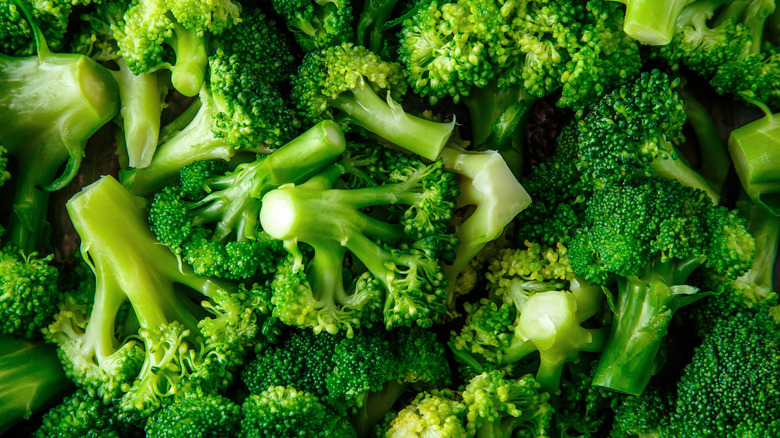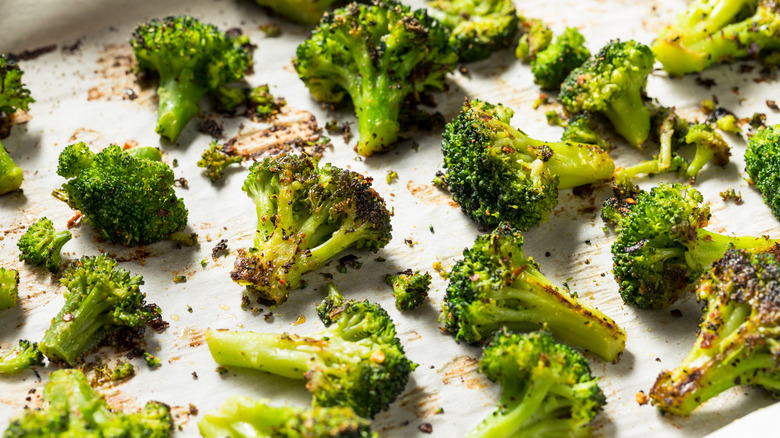The Big Broccoli Mistake That's Causing You To Miss Out On Flavor
What do Brussels sprouts and broccoli have in common? Other than their bright green color and the fact that they are botanically related (both are cruciferous vegetables), it's that they've been the punchline of picky eaters and vegetable cynics for far too long (via Cancer.gov). But while Brussels sprouts have become a trendy vegetable, in large part thanks to the fact that scientists in the Netherlands were able to isolate and eliminate chemicals within the sprouts that caused them to have "a very strong bitter taste" so they're now more palatable (via NPR), broccoli hasn't seemed to have the same glow-up.
Much like with Brussels sprouts, the problem with broccoli seems to be two-fold. Some people might hate broccoli thanks to the "bitter sensitivity gene" that also makes some people more aware of the bitterness found in cruciferous veggies, including the aforementioned Brussels sprouts. Then there's the chosen cooking method. If you've been subsisting on watery frozen broccoli or broccoli that's been boiled until its bright color has dulled to a yellow-green, then you're just not doing the veggie justice. With so much stacked up against broccoli's favor, how do you make broccoli recipes the whole family will eat? One New York chef is out to spread the word on a broccoli cooking method that might even be able to overcome the genetic odds and become a new favorite.
Just leave it alone
The key to making broccoli taste good isn't some fancy culinary technique or a pricy ingredient no regular person could afford. Instead, says cooking school founder Alison Cayne, cooks simply need to "Leave it be!" (via NBC). "Let your broccoli sear in the pan before tossing," Cayne urges. If you're not a confident cook then the thought of leaving broccoli on a roasting or sauté pan for too long might be scary. But that's the best way for it to develop flavor.
The reason? The Maillard reaction. If you've ever begged for the extra-crispy roasted potato with the dark brown edges, or snuck the charred bit off the end of a roast and reveled in its deep, toasted, savory flavor, that's thanks to the Maillard reaction. But in order for your food to start developing those robust flavors, it needs to reach at least 300 degrees, according to Serious Eats. If you want to make your broccoli more delicious, then let it brown before your flip or stir it. Don't be afraid to let the edges get frizzled and crispy. According to Cook's Country, seasoning broccoli with acid and salt can make it seem less bitter, too. Whether you're making a simple roasted broccoli recipe or doubling down on the umami with crispy roasted Parmesan broccoli, resist the urge to stir (and keep the lemon wedges and sea salt at the ready) and you'll be rewarded with the best version of this oft-maligned veg.

